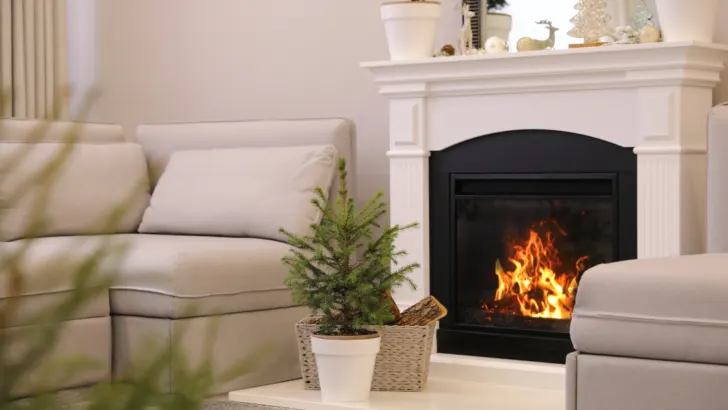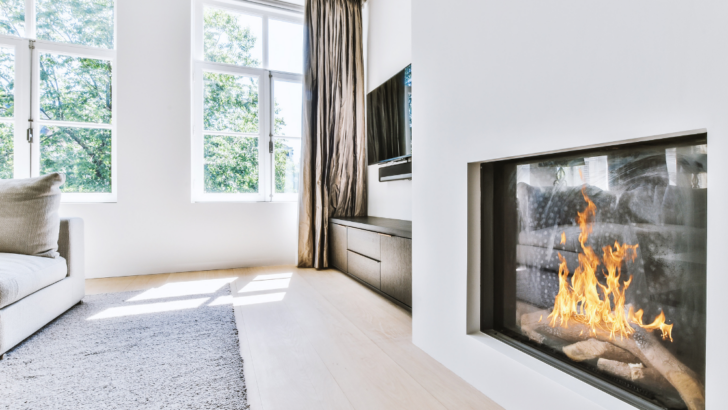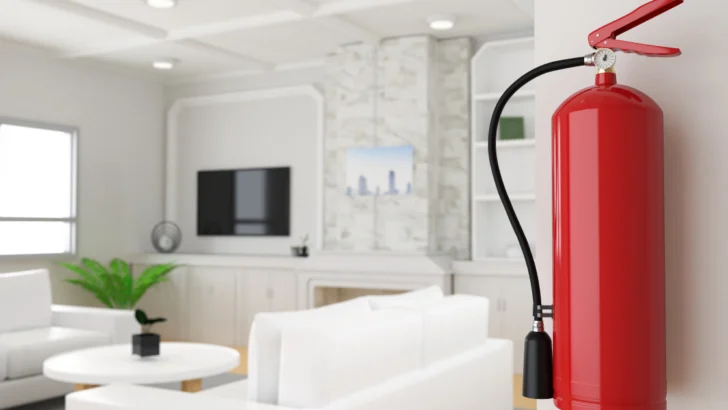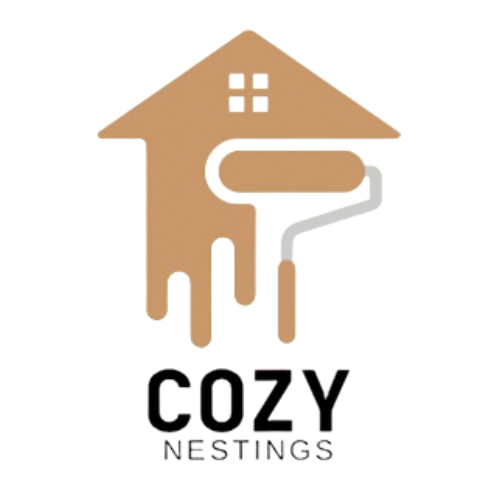
Warmth Without Limits Embraces the Flue-less Gas Fire Revolution!
Why are Flue-less Gas Fires trendy?
Flue-less gas fires have become trendy for Various reasons:
- Convenience: Flue-less gas fires are easy to install and don’t require a chimney or flue, making them an ideal heating solution for homes without a chimney or flue.
- Energy Efficiency: Flue-less gas fires are more energy efficient compared to traditional gas fires, as the heat generated is retained within the room. This results in lower running costs.
- Design: Flue-less gas fires come in a variety of designs and styles, allowing homeowners to choose one that complements their home decor.
- Environmental Concerns: As more people become environmentally conscious, flue-less gas fires, which produce fewer emissions than traditional gas fires, are becoming increasingly popular.
- Advancements in Technology: Advances in technology have improved the safety and performance of flue-less gas fires, making them a more attractive option for homeowners.
Overall, flue-less gas fires have become trendy due to their convenience, energy efficiency, attractive design, environmental benefits, and advancements in technology.
How does A Flue-less Gas Firework?
A Flue-less gas fire works by burning natural gas or liquified petroleum gas (LPG) in a sealed chamber, without the need for a chimney or flue. The heat generated by the burning gas is circulated within the room by a fan or natural convection, providing instant heat. The products of combustion, including carbon dioxide and water vapor, are vented directly into the room, where they are dispersed into the atmosphere.
To ensure safety, flue-less gas fires are equipped with several safety features, such as oxygen depletion sensors that shut off the gas supply if the oxygen level in the room drops below a safe level. Additionally, they typically have a catalytic converter that helps to reduce emissions.
It’s important to note that flue-less gas fires are only suitable for use in well-ventilated rooms, as the products of combustion must be properly dispersed to prevent the build-up of harmful gases.

Efficient and Environmentally Friendly: Flue-less Gas Fires at Their Best.
Are Flue-less Gas Fires Safe?
flue-less gas fires can be safe when installed and used correctly. However, it’s important to consider several safety factors when using a flue-less gas fire, including:
- Ventilation: flue-less gas fires must be used in well-ventilated rooms, as the products of combustion, including carbon dioxide and water vapor, are vented directly into the room. This helps to prevent the build-up of harmful gases, such as carbon monoxide.
- Oxygen Depletion Sensors: Most flue-less gas fires are equipped with oxygen depletion sensors, which shut off the gas supply if the oxygen level in the room drops below a safe level.
- Emissions: A Flue-less gas fire typically has a catalytic converter, which helps to reduce emissions. However, it’s important to choose a flue-less gas fire with low emissions to minimize the impact on air quality.
- Maintenance: Regular maintenance and cleaning are important for ensuring a flue-less gas fire’s safe and efficient operation. It’s important to have the fire service by a qualified professional to ensure that it is functioning correctly.
In conclusion, flue-less gas fires can be safe when installed and used correctly, but it’s important to consider the factors listed above and follow the manufacturer’s instructions and guidelines to ensure their safe and efficient operation.
Are Flue-less Gas Fires any good?
Whether a flue-less gas fire is good or not depends on various factors and can vary from person to person. However, here are some benefits and drawbacks of flue-less gas fires that can help you determine if they are a good option for you:
Benefits:
- Convenience: flue-less gas fires are easy to install and don’t require a chimney or flue, making them an ideal heating solution for homes without a chimney or flue.
- Energy Efficiency: flue-less gas fires are more energy efficient compared to traditional gas fires, as the heat generated is retained within the room, resulting in lower running costs.
- Instant Heat: flue-less gas fires provide instant heat and do not require a warm-up time, making them a convenient heating solution.
Drawbacks:
- Ventilation: flue-less gas fires must be used in well-ventilated rooms, as the products of combustion are vented directly into the room.
- Emissions: Although flue-less gas fires typically have a catalytic converter that helps to reduce emissions, it’s important to choose a flue-less gas fire with low emissions to minimize the impact on air quality.
- Maintenance: Regular maintenance and cleaning are important for ensuring a flue-less gas fire’s safe and efficient operation.
In conclusion, flue-less gas fires can be a good option for some people, but it’s important to weigh the benefits and drawbacks and consider your personal needs and circumstances before making a decision. It’s also important to have the fire installed and serviced by a qualified professional to ensure its safe and efficient operation.

Fire Up Your Style: Flue-less Gas Fires for Modern Living.
Are Flue-less Gas Fires Dangerous?
Flue-less gas fires can be dangerous if not installed and used correctly. Some potential dangers of a flueless gas fire include:
- Carbon Monoxide Poisoning: If a flue-less gas fire is not installed or used correctly, it can release harmful gases, including carbon monoxide, which is odorless, tasteless, and poisonous.
- Oxygen Depletion: The products of combustion from a flue-less gas fire can reduce the oxygen level in a room if the room is not properly ventilated. This can lead to an oxygen-deficient atmosphere, which can be dangerous.
- Fire Hazard: If a flue-less gas fire is not installed or used correctly, it can pose a fire hazard.
- Maintenance: Regular maintenance and cleaning are important for ensuring the safe and efficient operation of a flueless gas fire. If the fire is not properly maintained, it can pose a safety risk.
In conclusion, flue-less gas fires can be dangerous if not installed and used correctly. It’s important to follow the manufacturer’s instructions and guidelines and to have the fire installed and serviced by a qualified professional to ensure its safe and efficient operation. Additionally, it’s important to install and use a flue-less gas fire according to local building codes and regulations.
Who installs Flue-less Gas Fires?
Flue-less gas fires should be installed by a qualified professional with experience installing gas fires. A qualified professional typically includes a gas-safe registered engineer, who is trained and licensed to work with gas appliances and ensure their safe and efficient operation.
Having a flue-less gas fire installed by a qualified professional can help to ensure that it is installed correctly and by local building codes and regulations, which can help to minimize the risk of fire, carbon monoxide poisoning, or other safety hazards.
It’s important to choose a qualified professional who is experienced and knowledgeable about flue-less gas fires to ensure that the fire is installed and operated safely and efficiently.

Clean and Green: Flue-less Gas Fires for a Sustainable Future.
Do Flue-less Gas Fires Need Ventilation?
Yes, flue-less gas fires need proper ventilation to ensure safe operation. The products of combustion from a flue-less gas fire, including carbon dioxide and water vapor, are vented directly into the room where they are used. As a result, the room must be well-ventilated to ensure that the products of combustion are properly dispersed and do not build up to potentially harmful levels.
Inadequate ventilation can lead to a build-up of harmful gases, including carbon monoxide, which is odorless, tasteless, and poisonous. It’s important to follow the manufacturer’s instructions and guidelines for proper ventilation and to ensure that the room is well-ventilated to prevent the build-up of harmful gases.
Additionally, flue-less gas fires typically come equipped with safety features, such as oxygen depletion sensors, which shut off the gas supply if the oxygen level in the room drops below a safe level. These safety features help to ensure that the fire operates safely and efficiently and to prevent the build-up of harmful gases.
Do Flue-less Gas Fires smell?
Flue-less gas fires can produce a small amount of odor, but they are generally considered to be odorless. However, if a flue-less gas fire is not installed or used correctly, it can release harmful gases, including carbon monoxide, which is odorless and poisonous.
In some cases, a flue-less gas fire may produce a slight odor if there is a problem with the fire or if the room is not properly ventilated. In such cases, it’s important to have the fire inspected and serviced by a qualified professional to ensure its safe and efficient operation.

Flue-less Flames Beauty and Functionality in Perfect Harmony.
Do Flue-less Gas Fires cause condensation?
Yes, flue-less gas fires can cause condensation, especially in poorly ventilated rooms. The products of combustion produced by the burning gas can cause moisture to accumulate on windows, walls, and other surfaces, which can lead to mold growth and other condensation-related issues.
To minimize the risk of condensation, it’s important to ensure that the room in which a flue-less gas fire is installed is well-ventilated. This can be achieved by opening windows or doors, using extractor fans, or installing a ventilation system.
It’s also important to consider the location of the flue-less gas fire in windows and other sources of moisture, such as bathrooms or kitchens. If the fire is installed in a location that is prone to condensation, it may be necessary to take additional steps to reduce the risk of moisture build-up.
It’s important to note that condensation can be a serious issue if not addressed promptly, so it’s essential to monitor the room in which a flue-less gas fire is installed and take action if you notice signs of excessive moisture.
Overall, flue-less gas fires are considered to be low-odor and safe to use, provided that they are installed and used correctly and by local building codes and regulations.

The Future of Heating Flue-less Gas Fires for Every Home.
Can you have a Flue-less Gas Fire anywhere in the house?
Flue-less gas fires can be installed in most rooms within a house, but they do have specific requirements and limitations that must be met to ensure safe operation. These requirements include adequate ventilation, sufficient space for combustion, and proper gas supply. It’s important to consult with a professional before installing a flue-less gas fire to make sure that it’s suitable for your home and meets local regulations.
Can you have different colors or designs of Flue-less Gas Fires?
Yes, flue-less gas fires are available in a variety of colors and designs. Many manufacturers offer a range of design options to suit different tastes and decor styles, including contemporary, traditional, and modern designs.
You can find flue-less gas fires in a variety of colors and finishes, such as black, white, stainless steel, and brass, among others. Some models even have customizable front panels that can be painted to match the decor of your room.
In addition to the appearance, you can also choose from different fuel types, including natural gas or liquified petroleum gas (LPG), as well as different sizes and heat outputs to suit the needs of your room.
Overall, the availability of different colors and designs of flue-less gas fires provides consumers with a range of options to choose from, enabling them to find a fire that meets their style and functional requirements.

Instant Ambiance, No Chimney Required: Flue Gas Fires Await.
How much do Flue-less Gas Fires cost?
The cost of flue-less gas fires can vary depending on several factors, including the size, design, fuel type, and heat output of the fire. On average, flue-less gas fires can range in price from several hundred to several thousand pounds.
Smaller, basic models may cost several hundred pounds, while larger, more elaborate models with additional features and higher heat outputs can cost several thousand pounds. Additionally, the cost of installing a flue-less gas fire can also vary, with the cost of installation typically ranging from several hundred to a few thousand Dollars.
It’s important to consider the cost of both the flue-less gas fire and its installation when budgeting for a new fire. A qualified professional can provide an estimate of the total cost of installing a flue-less gas fire in your home, taking into account local building codes, regulations, and labor costs.
Overall, the cost of flue-less gas fires can vary widely, and it’s important to choose a fire that fits your budget and meets your heating needs while also providing a safe and efficient heating solution.
Where to buy Flue-less Gas Fires?
Flue-less gas fires are readily available for purchase in the USA from various reputable retailers and distributors. Here are some popular options:
-
Online Retailers: Numerous online retailers, including Amazon, Lowe’s, and eBay, offer a diverse selection of flue-less gas fires. Shopping online provides a convenient way to compare prices and explore different models from the comfort of your home.
-
Home Improvement Stores: Major home improvement chains such as Lowe’s, The Home Depot, and Menards feature a range of flue-less gas fires, both in-store and online. These stores offer options to suit various needs and budgets.
-
Specialized Heating Retailers: Specialized heating retailers focus on supplying and installing flue-less gas fires. They often provide a broader range of models and brands, along with expertise in installation and dependable after-sales service.
-
Manufacturer Websites: Many flue-less gas fire manufacturers maintain their websites, where you can directly purchase their products. This option ensures authenticity and direct access to the manufacturer’s offerings.
It’s important to research and compare different models and retailers to find the best deal on a flue-less gas fire. Be sure to read product reviews, check for any available warranties or guarantees, and consider the cost of installation before making a purchase.

Effortless Warmth: Elevate Your Home with Flue-less Gas Fires.
What is the opinion of designers and experts when it comes to Flue-less Gas Fires?
Opinions of designers and experts on flue-less gas fires can vary. Some may view them as a modern and convenient heating solution that doesn’t require a chimney or flue, while others may have concerns about their safety and impact on indoor air quality.
Designers may appreciate the sleek, modern look of flue-less gas fires and their ability to provide instant heat in a space. They may also appreciate the fact that flue-less gas fires can be installed in a variety of locations, including those without access to a chimney or flue.
However, some experts may have concerns about the safety and efficiency of flue-less gas fires, particularly about the release of emissions into the room. They may also have concerns about the cost and difficulty of installing a flue-less gas fire, particularly in older buildings or those with limited ventilation.
Ultimately, the opinions of designers and experts on flue-less gas fires will depend on their individual experiences and perspectives. It’s important to do your research and consult with a qualified professional to make an informed decision about whether a flue-less gas fire is the right choice for your home.

Effortless Warmth Elevate Your Home with Flue-less Gas Fires.
If you’re looking for more inspiration for your home improvement projects, be sure to check out our home improvement blog. We offer a wide range of articles on various topics such as kitchen remodels, bathroom renovations, and outdoor living spaces. Our team of experts provides detailed information and tutorials on how to achieve the look you want, whether it’s a modern, traditional, or rustic style. Additionally, we also provide tips and tricks to help you save money, time, and energy during your renovation projects. So don’t hesitate, to visit our blog and start planning your next home improvement project today!
I hope this helps! Let me know in the comments section below if you have any other questions about flue-less gas fires.
